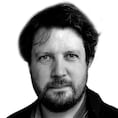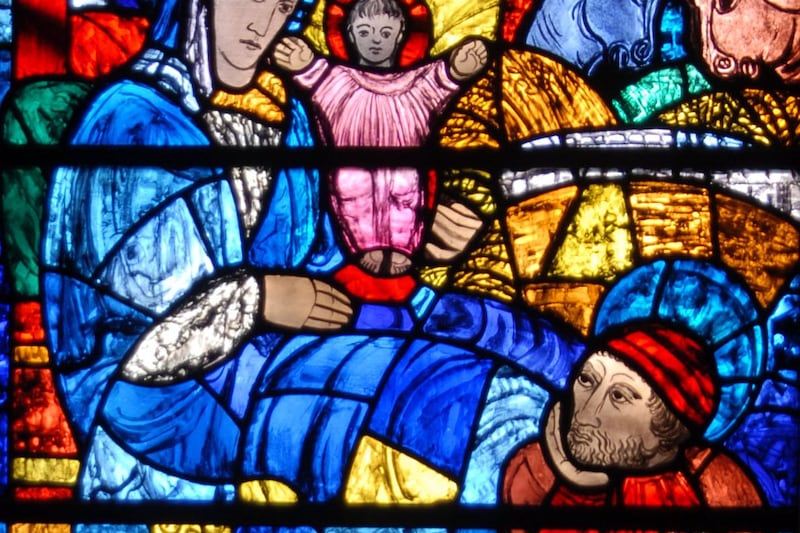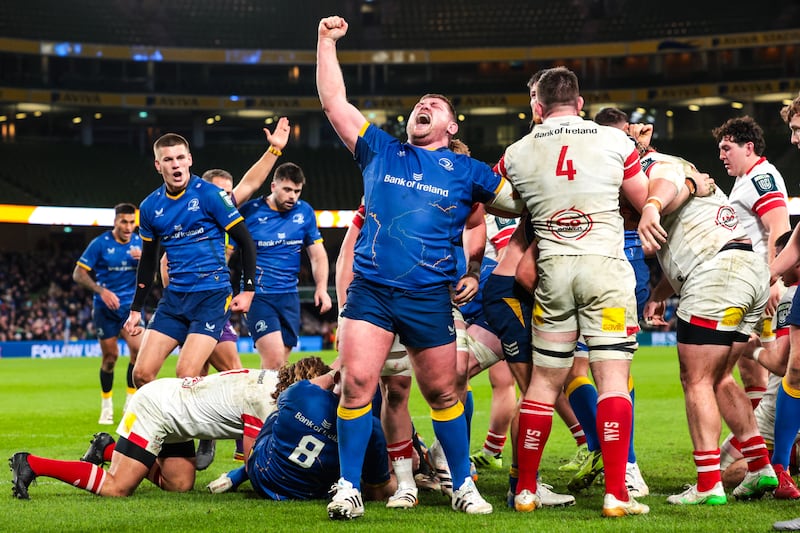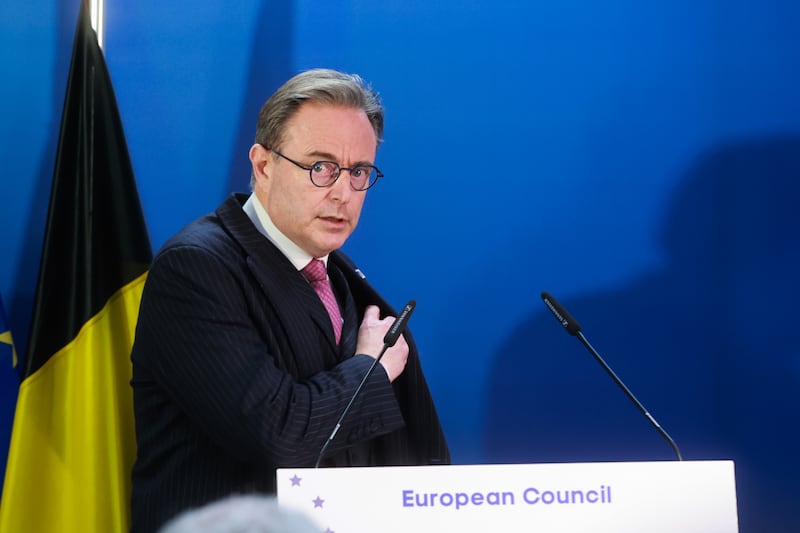“One kid said: ‘You bring chaos, and then you walk out’,” says the artist Yvonne McGuinness. “If you can just blow someone’s mind and say: ‘We’re going to just cause chaos here. And that’s okay. How do we build something out of the chaos?’ When someone doesn’t have a voice and they can find their voice through art, then maybe they can speak up.”
McGuinness makes participatory, community-based art. She goes places, meets people and builds artwork out of the experience: films, performances, costumes, sculptures, photographs, installations. She enjoys a chaotic classroom or a ritualistic procession.
In her St Gobnait series on Inisheer she organised a throng of schoolchildren, visitors and locals into a procession in celebration of St Gobnait. In ‘Moving mountains, wishing well, Brigid Cleary we won’t tell’ she constituted a masked performance in recognition of Brigid Cleary, a woman murdered on suspicion of being a changeling. In Before the Last Sun Sets, 80 people took part in a ritual in and around the Moylurg Tower in Lough Key forest park. “People love a ritual,” she says. “If everyone is doing the same thing, no one feels stupid.”
This month at the Galway International Arts festival, McGuinness is showing her film What’s Left Us Then, in which she and her director of photography, Michael Kelly, drive around the country visiting forgotten or unfinished concrete structures and talking to people they meet along the way.
READ MORE
“It’s so funny for someone to be asking me questions,” she says, when I put my recorder on the table in Neachtain’s pub in Galway. “I’m always the person asking questions.”
And over the course of the interview she does, in fact, ask me lots of questions. She’s a funny, warm, fast-thinking interviewee. She jumps from one thought to another, charged by both the curiosity that informs her work and a wider excitement about art and ideas in general.
As a child in Portmarnock she was, she says, always “going around with hammers trying to make things” but she didn’t necessarily know she wanted to be an artist.
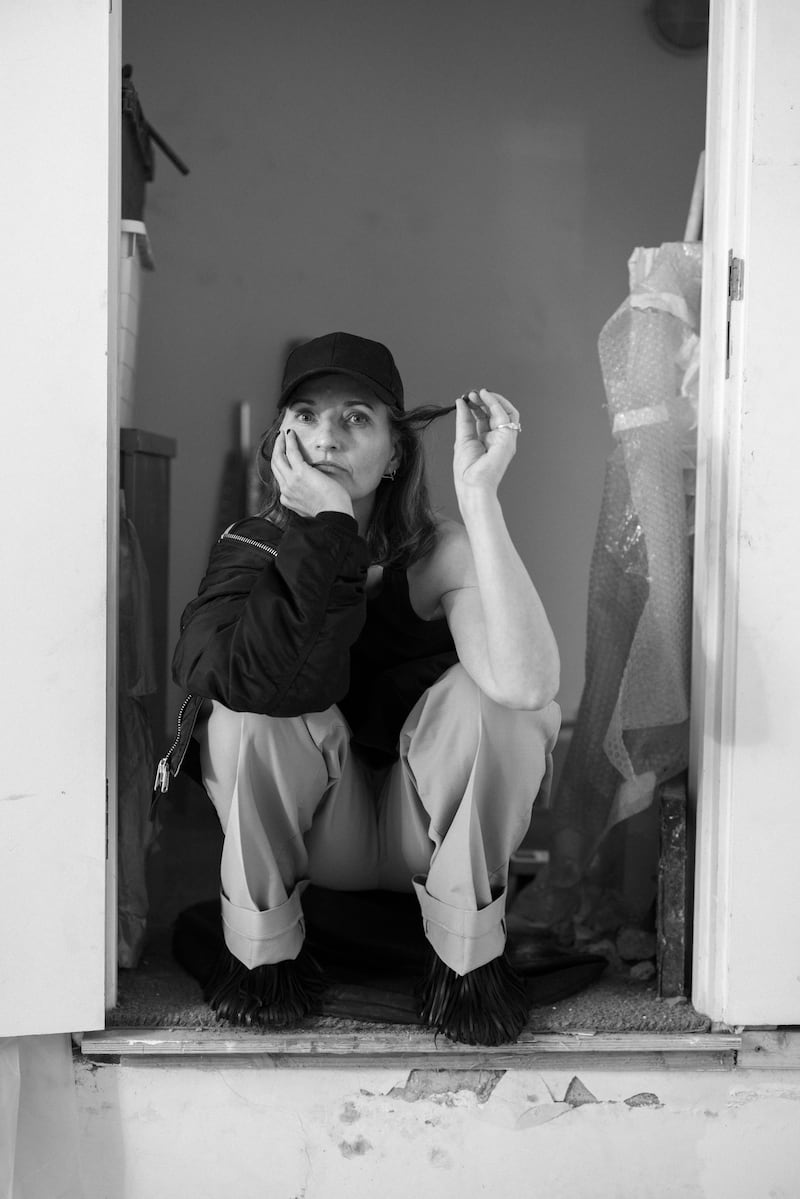
“When I went to art college with Crawford [College of Art and Design in Cork] I thought: ‘F**k, maybe I’m not an artist.’ But it was such a lovely community. I think by the time the degree came I was like: ‘No, I got this. I know what I’m doing.’”
There were no artists in her family. She was born in Kilkenny but grew up in Portmarnock. Her father was a businessman. Her grandfather was once mayor of Kilkenny and her uncle is the Fianna Fáil politician John McGuinness. Does she think that she picked up on some of that politics?
“I do sometimes, because I think [my art] is quite activist. All of the work is about going into communities and asking: ‘What’s going on here?’ I love going somewhere and going:, ‘Who’s running the gaff?’ And: ‘Who’s volunteering for the women’s group?’ And: ‘Who’s coming in and opening up the community centre?’ I’m always interested in the ground-up stuff.”
Cork was an energetic place in the 1990s, when McGuinness was in college there and met her husband Cillian Murphy, now an Oscar-winning actor.
“There was so much crossover [in the arts]. Kevin Barry [the novelist] would be sitting in the bar in the Bodega, still working in the Evening Echo; and there’d be Cabaret Deluxe and all those clubs ... The rave scene had just kicked in. There was a potentiality because Ireland wasn’t wealthy then, so there were still these buildings that were empty.”
Nowadays any building an artist might want to use, she says, tends to get turned into offices or apartments. “I’ve just come to the Printworks [in Galway] where my show is going to be and that’s going to be developed.”
McGuinness and her art college friends were influenced by how Damian Hirst and the Young British Artists had hosted their Frieze show in an empty London Port Authority building.
“For our diploma show in the Crawford, we didn’t have a space to show in so we showed it in a multistorey car park.”
Cork was mirroring [the London scene] but everyone was on the dole. It was such a good time. Everyone was doing something different. People were in bands. People were doing fanzines. There was performance art. Everything could be tried out. I think the art scene now is crushed a bit because of land and housing and all the studios are closing.”
What sort of work was she doing? “I got into printmaking but I never made a print that was the same.” She was too wedded to the mistakes, she says.
“I loved the f**king wrongness of it ... the masking tape still on the image. Then I got into multimedia and film and my degree show was monitors in trolleys.” She laughs. “It was about consumerism. I got selected for Intermedia, which was a cool show the Triskel [Arts Centre, Cork] ran [in 1998] and I did an off-site piece at Cork airport where I stencilled a whole text piece on to the baggage reclaim belt in Cork Airport. And we were left there overnight, Cill and myself. ‘Here’s the keys to the airport.’”
I think every woman should go back to work. I’m very lucky. But I think it’s so important for us not to stay at home and not be full-time mothers if you can do it. It’s so important to be out in the world.
— Yvonne McGuinness
They moved to London in 2001. “I got into the School of Visual Arts in America but we didn’t go because [Cillian and I] were together and he wasn’t going to be able to go,” she says. “So I went to the RCA [the Royal College of Art]. I was culturally out of my zone. I was doing prints and I was thinking: ‘What the f**k am I doing?’”
She elaborates later by email: “Being in the UK post YBA, where it felt like everyone was waiting for Charles Saatchi to buy your degree show, it was all about the market and the tutors were buying into that. I was trying to figure out a different way of making. It was leaning towards what I’m doing now, a socially engaged practice ... I was looking at [artists like] Eleanor Antin and Allan Kaprow.”
She and Murphy and their family were in London for 15 years but she stopped making art for a long time after the MA. “Cill was probably away a lot and I was at home with the kids. I also had lost my confidence. I didn’t quite know what [my art] was.”
Did it feel strange not making art? “I was really frustrated,” she says. “I think every woman should go back to work. I’m very lucky. But I think it’s so important for us not to stay at home and not be full-time mothers if you can do it. It’s so important to be out in the world.”
In 2005, she spent time assisting the visual artist Tacita Dean. “I was pregnant with Malachy,” she says. “I remember thinking I really wanted to work with her. She was doing a film about the Presentation Sisters, there was three of them left in this site, their nunnery, and she came up one day and [said]: ‘I don’t know what I’m going to do today.’ And it was like: ‘Oh, you can be like that!’ It was really formative. I have no art background [in my family] and I hadn’t watched a mother or father just being an artist so you go: ‘Is this what you’re supposed to do?’ You’re always checking. I’m still checking at 51 ... I’m constantly trying to deprogramme myself.”

When did she start making her own art again? “It was only when I came back to Ireland [in 2015],” she says. “That’s when I worked with Rhona Byrne on that project Mobile Monuments [three sculptures on tricycles]. They were cycled to all these places that were involved in 1916 and they opened up platforms for performance. Rhona really drew it out of me.”
She found a niche in public, community-based projects. She loves new communities and new suburbs. She tells me about growing up in Portmarnock surrounded by both fields and building sites. “There’s the threshold between this suburb and this other thing and that’s when I get excited. I was on building sites my whole childhood.”
One of her ongoing projects is the Unit for Radical Belonging in Tyrrelstown, another new suburb, supported by Fingal County Council. “It’s one of the most multicultural places in Ireland. There was this shopping unit and I was like: ‘Where’s the developer? Who owns the shopping unit?’ I [wanted to] create this cultural community centre – the Unit of Radical Belonging – where we can discuss what it means to belong differently. The space is really integral. It gives me just this grounding and it allows people to see that they can come somewhere. I need somewhere to put people to talk to them. Because in Tyrrelstown there’s no cafe and no church and no river!”
She tells me about the people she has met there. A schoolteacher came in one day and started talking about the sacred nature of the land because of its proximity to Newgrange. “He sat in fields at night stargazing.” There was another man, an asylum seeker, who was somehow in the naval reserve. “I was like: ‘You’re in the film!’”

It sounds slightly journalistic. “Bad journalism,” she says. She laughs. “What I love most about these projects is that artists can get somewhere that most people can’t.”
She recalls the Central Field project she worked on in collaboration with Rhona Byrne in Adamstown. The duo responded to the environment by creating earthworks and organising workshops and performances often in collaboration with schools and community groups and local people.
“You’re in the boardroom negotiating working in that field,” she says. “And then you’re in with kids and the community ... and then into the building site where they’re constructing houses. One of the best moments was bringing all the builders from the construction site in and doing performance work with them. They were totally up for it.” She laughs at the absurdity of it. “Two middle-aged white women in a f**king field in Adamstown.”
What’s Left Us Then is a bit of a departure, a travelogue about concrete and the concrete oddities dotted across the Irish landscape: abandoned hotels, forgotten artwork, old sheds, houses under construction, quarries. The project started with a series of digital photos and films she took of abandoned building sites in Greece. All the images were corrupted, except for one picture with which she starts the film. She laughs. “It was Herzogian. You just work with the mistake or the wrongness of it.”
One of the structures that features in the film is the brutalist Moylurg Tower built in Lough Key forest park on the site of the old Rockingham House by Jim Fehily.
“It’s this absolute oddity in the landscape. And then the council added on bits to it. The idea of ‘unbelonging’ really interested me. When I was in London, it didn’t feel like I belonged. I understood, when I came back, how people here who are not from this country might feel this pain about missing their own country. I really missed my own country and my landscape when I was in London. And so the unbelonging thing, when you’re sticking out like a sore thumb, like this building, was important.”
The Oscars is a show, it’s entertainment, it’s fun ... Cillian, he’s worked so hard he deserved all the awards, but we’re not a show and I find it hard to put on a mask.
— Yvonne McGuinness
At another point in the film, when investigating some abandoned train carriages McGuinness and Kelly meet an elderly concrete entrepreneur called Jackie Whelan who tells them his story.
“It was so serendipitous. He set up a quarry because he knew Moneypoint [power station] was happening. He knew that if he tried to get the concrete up north, it’d be way too expensive. So he’s like: ‘F**k this. I’m just going to make my own quarry.’ That’s modern Ireland. Real Haughey stuff.”
The controversial former taoiseach was big for her family. “There are pictures of my grandad with Charles Haughey.” She thinks for a moment. “You know what really influenced me and Cill too? Fintan O’Toole’s book We Don’t Know Ourselves.”
O’Toole, she says, talks about us being “tenants in our own country. We were colonised and we got the Brits out and then Haughey just turns into a landowner. He just emulates this snobby aristocrat and buys that house in Kinsealy and an island.”
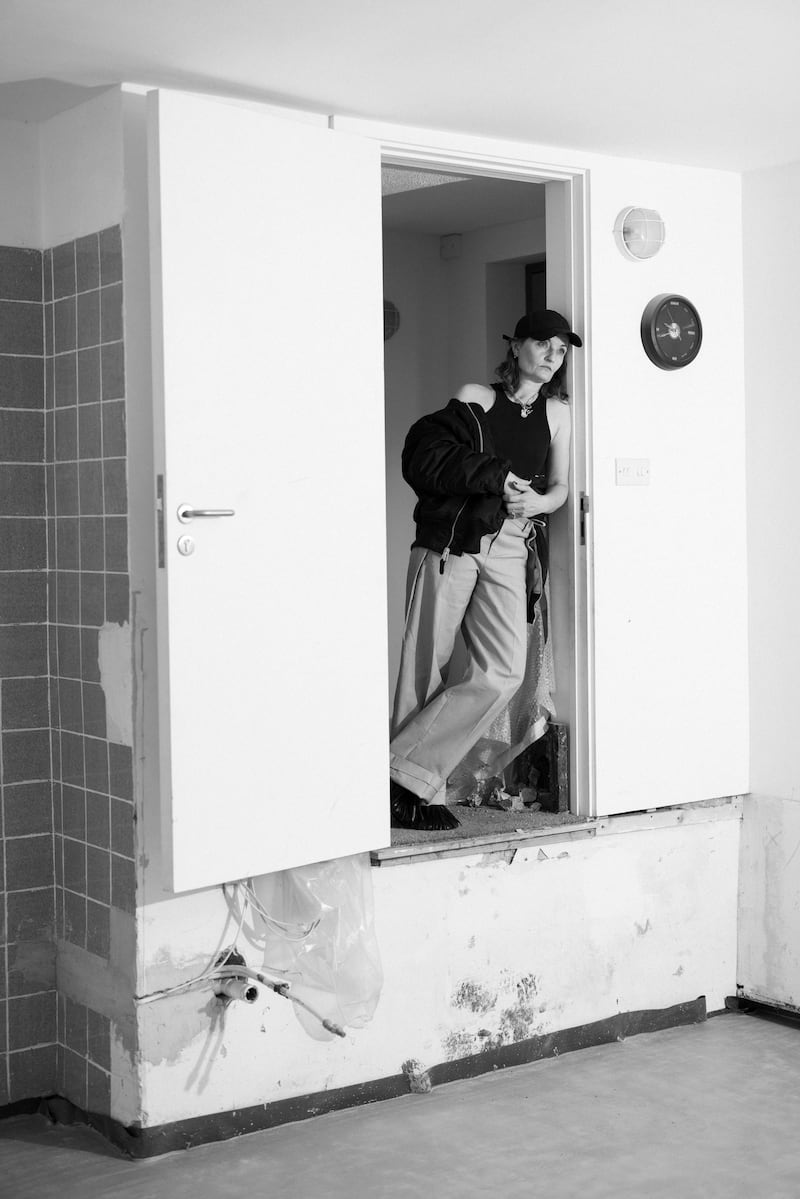
She thought of that a lot as she and Michael Kelly drove around Ireland, she says. “Are we still acting like tenants? We’re just kind of ravaging [the land]. We actually have to live here and it’s a really small country. They’re thinking of quarrying for lithium in Ireland. Our land mass isn’t big enough.”
The film’s message is left deliberately open to interpretation. She and Kelly appear in the film and she outlines some of their views in the voiceover.
Kelly is very troubled by the environmental issues created by all the quarrying and building. McGuinness shares his concern but also sees something compelling in all that human enterprise and vision. The building of her own family’s Kerry house is featured in the film, including footage of the builders placing a horse’s skull in the floor as per an old Irish tradition. “It was something to do with dancing,” says McGuinness. “The acoustic is different. It creates a hollowness.”
Was it important to include these sequences? “It was really important, because, here we go, I’m pouring load of concrete into rural Ireland. I’m doing it too.”
The film ends at a quarry. They spent two days there. What did they spend the two days doing? “Being absorbed by it! If there’s ever a right time to use the word awesome it’s standing in the middle of a quarry. It quickly makes you feel very human, as the scale of it is so vast it swallows you. I was mesmerised by the notion that I’m just a speck, a nothing.”
Collaboration is a recurring theme in our discussion. McGuinness repeatedly refers to artistic colleagues such as Kelly, Byrne, her editor John Murphy or the musician Nina Hynes.
Would she and Cillian ever collaborate? She laughs. She thinks their approaches are too different. “I’m chaotic, whereas Cillian is very, very disciplined. I empty the suitcase and then I edit, edit, edit.”
She is also conscious that she’s working in a completely different corner of the art world to her husband. While he often works on huge movies viewed by millions of people, she is making localised participatory artistic experiences in and for small communities. “And it’s ephemeral. It disappears.”
What’s it like going from community-based art projects to events like the Oscars? “The Oscars is a show, it’s entertainment, it’s fun ... Cillian, he’s worked so hard he deserved all the awards, but we’re not a show and I find it hard to put on a mask. It’s like an out-of-body experience. I’m much more at ease in the muck of a field with a class of 37 nine-year-olds or in a unit in Tyrrelstown talking electrics with an electrician than I am with a red carpet.”
Do she and Cillian discuss their work together? “You’re so busy, it’s more: ‘Who did the shopping?’ It’s the domestic in between the art. It’s more about bolstering each other, keeping each other secure in the intuitive side of things, that trust to go with your instincts. I’ll show him things or he’ll show me stuff and I’ll go: ‘I really like that.’”
She likes her artistic practice to be loose and unpredictable. “I’m dyslexic so I’m non-linear. I go everywhere.”
And what does art mean for her? “Art is essential and it’s gnarly and it doesn’t make sense. But the world doesn’t make sense.”
In art you don’t need to understand everything, she says. “I’m really excited by that.”
If she worked out what she was doing too carefully she couldn’t do it, she says. “I’d be too scared.” She likes, instead, to plunge into the unknown. “In the process of falling and having to land, you figure it out.”
Yvonne McGuinness’s What’s Left Us Then can be seen as part of the Galway International Arts Festival at the Festival Printworks Gallery from July 15th-28th. giaf.ie Photographs: Rich Gilligan. Shoes on cover image: Phoebe Philo. Trousers: Better Us. Necklace: Emer Roberts.

